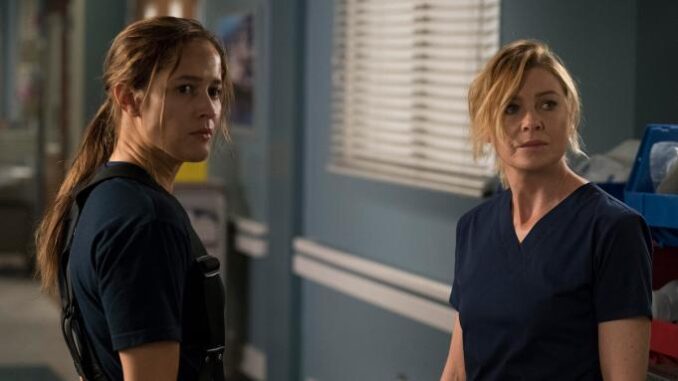
The Blaze of Shared Responsibility: How Grey's Anatomy and Station 19 Forged a Game-Changing Connection Through Crossover Episodes and Storylines
The siren wails. It’s a sound synonymous with urgency, crisis, and the blurred lines between life and death. For years, that sound has been a constant companion to viewers of Grey's Anatomy, a show that has perfected the art of wrenching hearts amidst the sterile backdrop of Grey Sloan Memorial Hospital. But in recent years, that siren has been joined by the roaring engines of fire trucks, as Station 19 has emerged as a potent counterpart, exploring the lives and sacrifices of the brave men and women fighting fires and rescuing lives in Seattle. While standalone dramas in their own right, the ABC chief recognized the potential for something more, a synergistic relationship that has fundamentally changed both shows through deliberate crossover episodes and interwoven storylines. This connection, a game-changer according to network executives, has elevated both series by exploring themes of shared responsibility, community, and the very human cost of heroism, all while offering a richer, more immersive viewing experience.
Initially, the connection between Grey's Anatomy and Station 19 felt more like a friendly nod than a significant artery. Characters would occasionally bump into each other, a doctor treating an injured firefighter, a firefighter calling for medical assistance. But as the shows matured, the writers deliberately cultivated a deeper bond. They understood that the real potential lay not just in convenient cameos, but in exploring the interwoven nature of their professions and the shared trauma they experience. This led to the creation of meticulously crafted crossover events, often centered around large-scale disasters that required the expertise of both the medical and firefighting teams.
These crossovers are more than just stunts; they are meticulously planned narratives that utilize the strengths of both casts and locations. A building collapse, for instance, becomes a landscape of devastation that requires both the paramedics from Station 19 to extract victims and the surgeons of Grey's Anatomy to mend the shattered bodies. The tension is palpable as viewers watch Maya Bishop orchestrate daring rescues while Meredith Grey struggles to keep a critically injured patient alive. This shared struggle highlights the often-overlooked connection between these first responders, demonstrating that they are not operating in separate silos, but rather as vital components of a larger system of care.
Beyond the explosive spectacle of major disasters, the writers have also ingeniously integrated smaller, more intimate storylines that weave between the two shows. Romantic relationships, for instance, have become a crucial bridge. The complex and passionate connection between Carina DeLuca and Maya Bishop, spanning both the surgical wards and the firehouse, exemplifies this. Their relationship isn't just a subplot; it's a significant thread that explores themes of commitment, communication, and the challenges of maintaining a personal life in professions that demand constant sacrifice. These relationships humanize the characters, making them more relatable and investing the audience in their lives beyond the immediate crisis.
The crossover episodes and storylines also serve to explore the emotional and psychological toll that both professions inflict. Firefighters and doctors are constantly exposed to trauma, death, and suffering. The shared experiences, depicted through poignant scenes of vulnerability and shared grief, create a powerful sense of camaraderie and understanding. Viewers witness the support systems that develop between these individuals, the unspoken bond forged in the crucible of shared adversity. This exploration of trauma and its impact on mental health is particularly resonant, offering a nuanced and often overlooked perspective on the true cost of heroism.
However, the success of this interconnectedness isn't without its challenges. Maintaining a consistent tone and ensuring that viewers of one show are not completely lost when tuning into the other requires meticulous planning and execution. The writers must carefully balance the needs of both narratives, ensuring that each character is given sufficient screen time and development. The potential for over-saturation is also a concern, as too many crossovers could dilute the individual identities of both shows.
Ultimately, the orchestrated connection between Grey's Anatomy and Station 19 is a testament to the power of synergistic storytelling. By blurring the lines between the hospital and the firehouse, the writers have created a richer, more immersive world that explores the profound connection between two vital professions. It's a world where the siren of an ambulance blends seamlessly with the roar of a fire truck, a constant reminder of the shared responsibility, the unwavering dedication, and the undeniable human cost of saving lives. The game has indeed been changed, and viewers are the beneficiaries of a more compelling and deeply moving television experience. The fire may rage on the streets of Seattle, but the embers of shared humanity burn even brighter within the hearts of those who risk everything to protect it.
